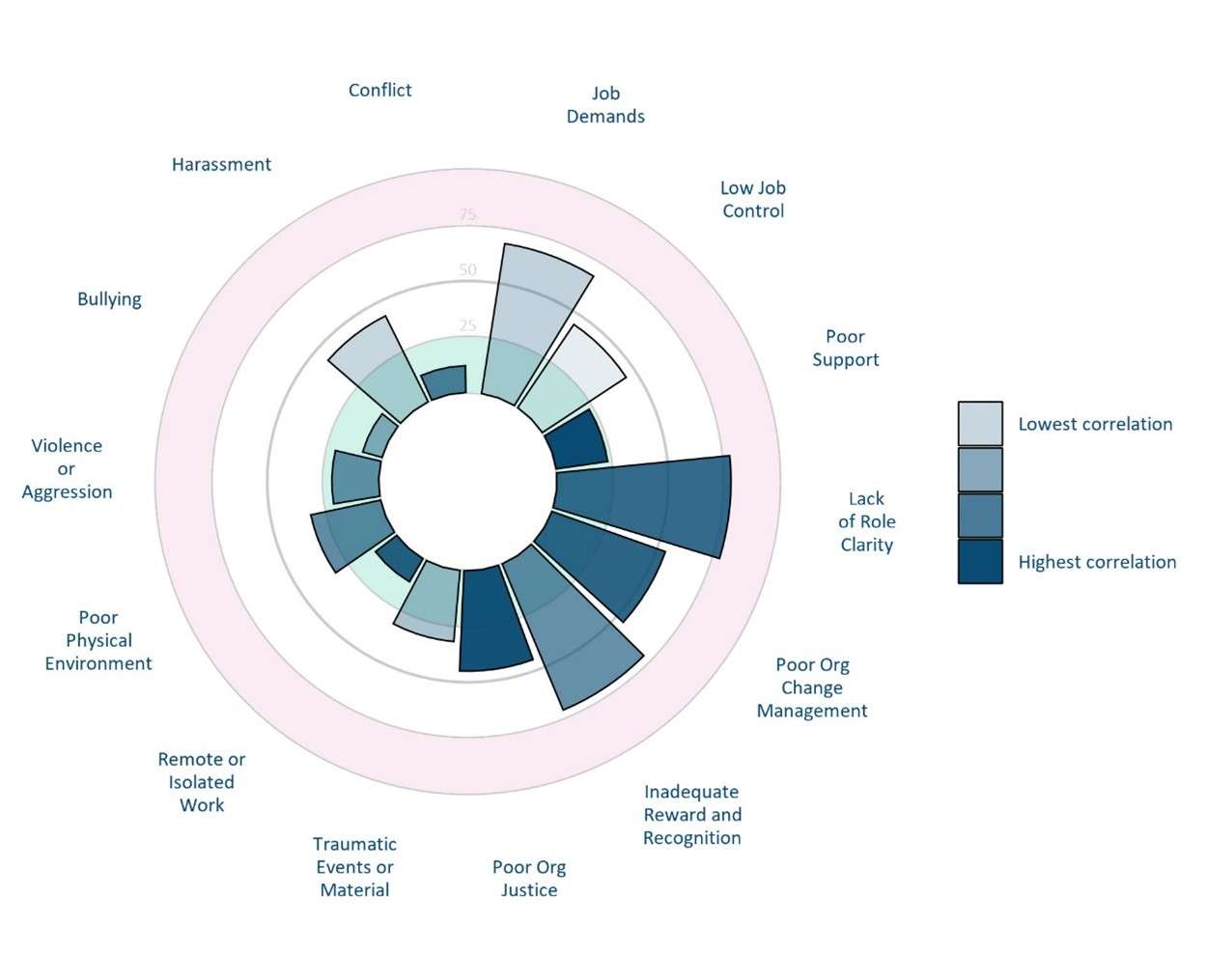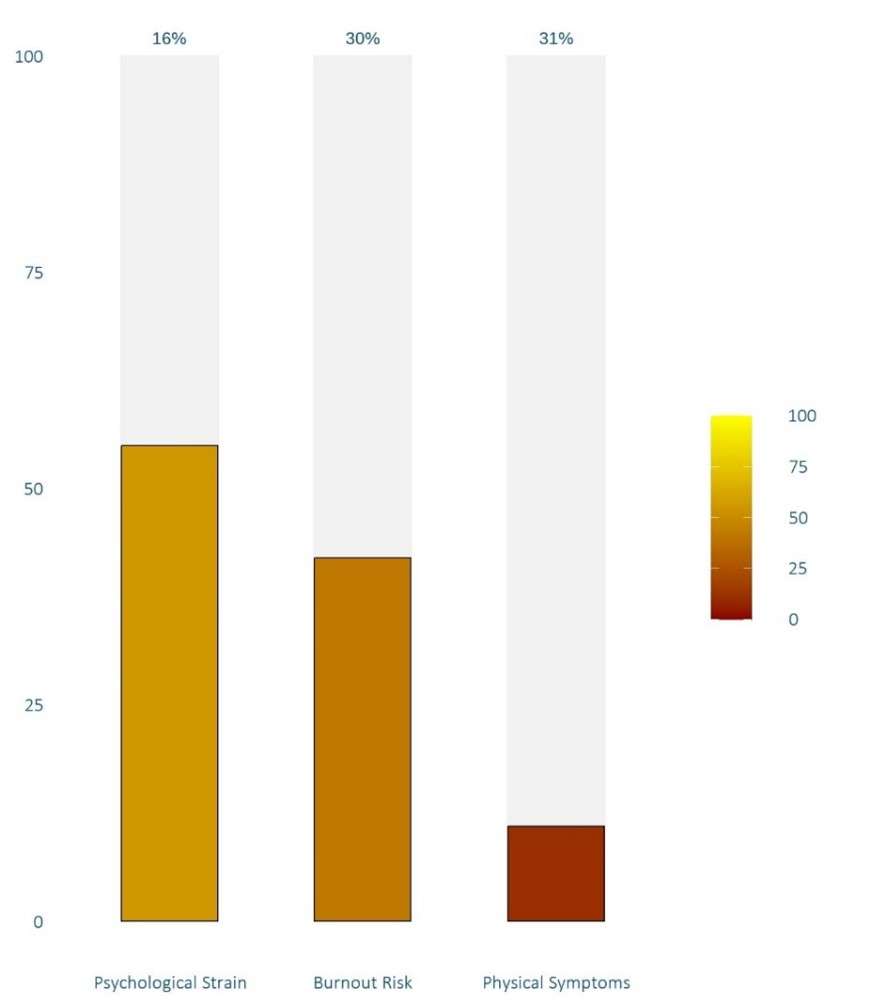
Building a Psychosocial Hazard Assessment
We are standing at the precipice of a new world of work. I say this in the sense that soon, we could very well end up living in a country, where going to work is a pleasant and engaging experience as the rule, not the exception. Or at least, we possibly could be.
Legislative changes and their implications
Over the past two years, the Australian federal government has undertaken legislative changes in our anti-discrimination, and workplace health and safety laws. These changes are meaningful: employers across the country now have an obligation to proactively ensure that their workplaces and roles do not pose a risk to the psychological health and safety of their workers, in the same way that they are obligated to protect their workers from physical harm. This is a monumental change in the fortunes of workers across Australia, and is something that now needs to be considered and acted upon by every single leader in Australia.
Finally we are seeing validation, baked into or country’s employment laws, that risks to psychological health and safety are just as dangerous, if not more so, than risks to physical safety.
Why I'm excited
As a workplace psychologist (and Organisational Psychologist), this is incredible news. An area that I am so passionate about, and aligned to professionally, is receiving the attention and energy that it has always deserved. What’s more, I’m lucky enough to work where I do during this evolution: Mapien are uniquely positioned as a people solutions consultancy with nationally recognised specialisations in employment law, human resources, and workplace psychology, we sit right at the nexus of workplace mental health considerations in Australia and have been supporting our clients there with rapidly increasing frequency. It’s already been a busy one for us.
I absolutely love making things for people. Leading our psychometric testing services and broader assessment offerings for the business gives me a unique opportunity to get involved, and so I immediately jumped at the opportunity to build Mapien’s Psychosocial Assessment Tool, or MPAT, to validly and reliably assess the extent of specific psychosocial hazards in the workplace, and the subsequent risk to wellbeing.

A rewarding experience
The entire process was highly rewarding, if a little exhausting. From the research phase to the ongoing iterative design and decision-making, to piloting and validation work, to polishing the reporting and output to meet our clients needs as directly as possible.
Safe Work Australia (https://www.safeworkaustralia.gov.au/safety-topic/managing-health-and-safety/mental-health/psychosocial-hazards) offers possibly the most in-depth and useful set resources of this nature, which made adhering to evidence-based best practice in content and definitions so clear and simple, and the collaboration that we undertook to iterate and strengthen content, tone, and mechanics was impactful to say the least.
With the data gathered from our piloting, I got to spend a fair chunk of time in the drivers seat of R Studio statistically analysing our items and models, establishing our psychometric validation, and producing our figures and backend analysis for production. Needless to say I got to wind the clock back a little and get back to building assessments again, and I loved it.
What we were able to produce though is more exciting: a psychometrically sound, valid and reliable measure of psychosocial hazards, and subsequent risk, in the workplace.
This represents a portion of Mapien’s suite of solutions across our Workplace Health and Safety framework, and I am unreasonably proud of this contribution to the business.


Sample MPAT figures
My observations on current psychosocial hazard assessment practices
What has subsequently begun to concern me is the wide variety of quality and robustness of some approaches that are available out there. Workplace mental health, and psychological health and safety more broadly, is absolutely no joke. There is a reason that we are legally obligated to do everything reasonable and practicable to ensure psychological health and safety in our workplace, and to monitor and review it ongoing. This requires the gathering of valid data, ensuring assessment of any and all potential hazards directly, so that the most appropriate changes can be made according to the hierarchy of controls.
What is concerning is seeing the potential for misdirected decision making and action, prompted from the application of hazard identification and risk assessment processes that:
- are only vaguely related to any of the psychosocial hazards that have been identified in the 2022 code of Practice
- do not cover the full range of hazards that have been identified as critical factors, and/or
- do not cover any of the hazards or impacts on risk with sufficient depth or breadth to be reliable or useful at all, or to guide effective control of those risks
Psychological health and safety demands to be taken seriously in our workplaces. This is not simply because the law now tells us to, but because it is the right thing for you, our people, our businesses, and our economy. Workplaces are being audited, PINs are being served, and fines are being received. Large ones. Taking the quick, easy, and less comprehensive path to managing your responsibilities not only makes little commercial sense, but it can leave you and your employees dangerously exposed. This is why we have taken such a robust and evidence-based approach to creating our tool, and to the way in which we partner with our clients when supporting psychological health and safety in the workplace
Be sure to make the right decision
When you look into this – make sure you know that you are using valid frameworks and tools, and that you are measuring everything you need to. In reaching out to the Mapien team for support in managing their psychosocial risk, we have been asked a variety of things about our tool, and approach:
- Does our assessment, and our broader consulting approach, align directly with the ‘Managing the Risk of Psychosocial Hazards Code of Practice’?
- Has the assessment undergone validation studies, and is the measurement model supported and statistically valid?
- Exactly how does the assessment measure frequency and/or severity of the hazards, and of their impact on risk?
- Is the assessment validated and supported by evidence in its design, to the extent that I feel safe and supported in administering it?
Make sure you ask that the supplier has that evidence, and make sure that you are not making a decision purely based on the length of the survey or the ease of its procurement. Brevity does not equal quality, particularly in this case.

Sample MPAT Figures


Connect with us
If you would like to learn more, please reach out and one of our Workplace Strategists will be in touch within 24 hours.

